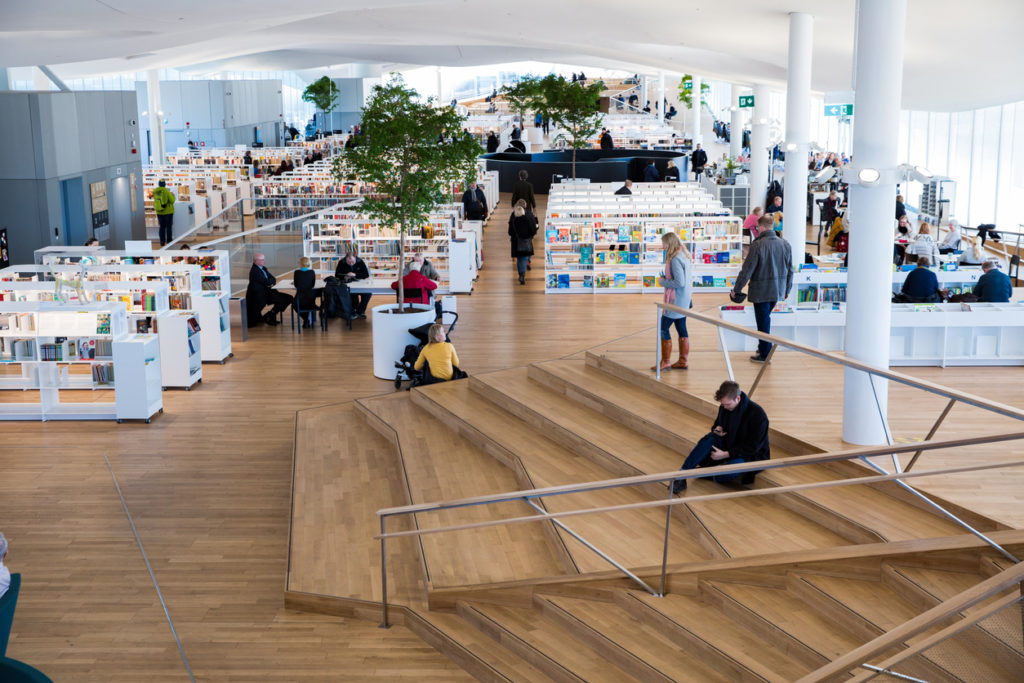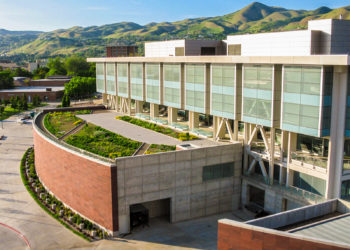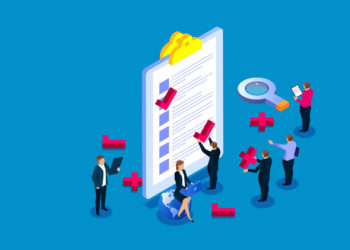Editor’s Note: Today’s post is from the AUPresses Library Relations Committee (Ana Maria Jimenez-Moreno, Jason Fikes, Tracy Kellmer, Stephen Hull, Joell Smith-Borne, Saleem Dhamee, and Annie Johnson). The Library Relations Committee’s core commitment is to make contact with library professionals, discussions, and organizations to deepen our understanding of how together librarians and publishers can create a healthy scholarly ecosystem. This post is being concurrently published on the Library Publishing Coalition’s blog.
In order to gain greater insight into the state of library-publisher relations today, we asked Executive Director of AUPresses, Peter Berkery, and Executive Director of the Association of Research Libraries, Mary Lee Kennedy, to share their thoughts about how relations between the two communities have changed. Their answers ultimately reveal more similarities than differences. They note current sites of collaborations (particularly around open access) and common areas of tension (around financial sustainability). While there has been a refiguring of what publishing means, both groups have a heightened dedication to a just and equitable scholarly environment. We hope these interviews can continue the dialogue that librarians and publishers are having across and within our communities.

Mary Lee Kennedy, ARL
What do library-publisher relations mean to you?
ARL and AUPresses have worked together for years on both TOME (Toward an Open Access Monograph Ecosystem), and P+L, and the community of libraries and university presses that share a reporting relationship. This has given ARL and its membership a close relationship with the university press community and has led to a focus within our Scholars and Scholarship portfolio on university-based publishing. “Publisher” is a broad category encompassing many shapes, financial structures, and interests, so we’ll make some very broad observations about the environment as well as our own work.
Our interest in university presses, scholar-led presses, and library publishing is deliberate — reflecting what we see as a set of strategic opportunities for universities to invest in infrastructure for scholarly dissemination. This is particularly true for the social sciences and humanities, which still depend on long-form publishing for disciplinary and career advancement. It is also true for new and emerging forms of digital scholarship, including digital humanities, preprint services, and new forms of information such as code, methods, and research data publishing.
ARL views the research environment as an ecosystem, in which there are critical roles for scholars, publishers, and libraries. Our mission is to advance both enduring and barrier-free access to information within that ecosystem, and we seek to advance a shared commitment to financial sustainability, research integrity, equity, accessibility and diversity in publishing for the benefit of current and future generations of scholars. In practice, this has meant a commitment to open scholarship and a balanced copyright regime.
How do you feel that library-publisher relations have changed?
The shift to digital publication and acquisition of electronic resources has changed a lot about research and learning, including library-publisher relations. Licensing electronic resources required a whole new set of skills and practices, and that has been a space of both expanded access and tension, particularly with respect to unsustainable costs of scientific journals. ARL has made a recent call for more transparency from both publishers and libraries regarding licensing terms and prices. Similarly, the digital era has seen tensions as libraries navigated what they could do with their print collections to serve their communities — leading to great collective innovations like the HathiTrust, institutional and disciplinary repositories, and digitized special collections. Unfortunately, years of litigation by publishing associations — against the HathiTrust and libraries, or Georgia State on e-reserves, and now, publishing associations pushing back on individual states’ efforts to adopt equitable ebook laws — all serve to challenge what could be a more productive and forward-looking relationship in the service of scholarship. For example, among university presses, it’s been exciting to see developments like the University of Michigan’s Fund to Mission, MIT’s Direct to Open, COPIM, and of course, TOME, now in its final year of the pilot.
Scientific publishing increasingly includes data-sharing practices, including code and methods. This means that libraries, publishers, scholars, institutions, and repositories all need to embrace common standards in order to make the data ecosystem FAIR and to minimize burden on researchers, while increasing access to science. ARL has done work in this area as a member of the National Academies Board on Research Data and Information, a member of the US National Committee for CODATA, and in convening the community in advancing the adoption of persistent identifiers (PIDs), for example.
What do you envision library-publisher relations to be in the future?
Within the ARL community, members may have responsibility for the university press, run library publishing programs, collaborate with scholar-led activities, or all of the above. And they all acquire vast amounts of content from publishers, either individually or through consortia. Our libraries have large collections in all formats, and are working with scholars to produce new forms of digital scholarship and to curate and manage research data. Within the university-based publishing sphere, we see strategic opportunities for a closer relationship to ensure the sustainability of scholarly monographs, develop open educational resources, and support new and interdisciplinary centers of scholarship. Scholarly monographs — books written by scholars for scholars — are a core reason why university presses exist. Libraries are now the only significant purchasers of monographs, and their acquisition budgets are increasingly constrained. Collectively, presses, libraries, and their universities need to embrace the need to stabilize and rationalize the way this core piece of scholarly infrastructure is funded and supported, while balancing this traditional core with emerging forms of scholarship and the shared commitment to equity and inclusion. There is an opportunity together to consider models for centering publishing in the academy.
With regard to large commercial publishing, many of our libraries are rethinking their frameworks for subscriptions, canceling large packages in favor of smaller, high-use title lists, and experimenting with publish and read agreements. Again we would encourage the highest degree of transparency in pricing and terms of contract, in order for the community to assess the value of the new agreements and the extent to which they align with local principles and missions. In our policy portfolio, we are focused on the statutory rights that libraries have to perform their essential functions, and on safeguarding those rights in a digital licensing regime. We are committed to working with publishers to ensure equity and that all knowledge is accessible.
How can we engender better understanding between libraries and publishers?
ARL and AUPresses are ideally situated to continue informing and convening our memberships on the dynamics and opportunities for joint endeavors among university presses and libraries, particularly in terms of sustainability and academy centered publishing models. We share the same goal — access to scholarship — and together we can advance this through the relationships we have with local scholars and broader disciplines. Our focus on university-based publishing already broadens that conversation beyond our memberships to include scholar-led endeavors, society partnerships, and more.
What resources or conversations have most significantly informed your views on library-publisher relations?
ARL’s member institutions are leaders in their institutions and the field, and are actively engaged in our work. ARL staff participate in national and international initiatives on a variety of boards and coalitions related to publishing. Through our collective engagement we convene to shape a productive library-publisher relationship, with scholars at the center.
Peter Berkery, AUPresses
Disclaimer: in the questions below, I’ve taken “publisher” to mean “mission-based, nonprofit publisher like a university press,” and “library” to mean primarily “research university library.” University presses obviously interact with and distribute publications in partnership with a wide range of public, secondary school, and scholarly libraries and librarians. Although my responses below focus on our community’s relationship with research libraries and librarians, university presses serve scholar-authors by supporting wide promotion and dissemination of their scholarship, importantly to more general audiences as well as within academic communities.
What do library-publisher relations mean to you?
Simply put, research libraries and university presses support scholars and contribute to a healthy, shared scholarly ecosystem. AUPresses members’ mission to ensure academic excellence and cultivate knowledge clearly tracks with scholarly libraries’ aims and goals, so there are many areas of mutual interest and activity.
Back in the mists of time, it’s easiest to see publishers’ relationships with libraries begin with publishers recognizing libraries as a key customer group and as descriptive metadata creators and users. Individual university libraries and university presses have long been engaged in management and reporting relationships as well. All of these relationships have continued over time, of course, and they also have been impacted more recently by the possibilities for increased digital cooperation and collaboration among publishers, libraries, and scholars as campus partners.
Institutionally, AUPresses promotes understanding and mutually beneficial relations between libraries and its members in a number of ways: the work of our Library Relations Committee; dialogue with the Library Publishing Coalition and its members, particularly facilitated by our cross-pollination grants to attend each other’s conferences since 2016; participation in the Committee on Publication Ethics and the Charleston Conference; co-sponsorship of the Toward an Open Monograph Ecosystem project with the Association of Research Libraries (ARL) and the Association of American Universities; and other high-level interactions with ARL, including P+L conferences, and with the Association of College and Research Libraries.
How do you feel that library-publisher relations have changed?
Probably the answer to this question depends on one’s reference point (i.e., changed since when? Or, which libraries?) But in terms of research and university libraries, it feels as though we are much closer partners and collaborators than in times past. Maybe a decade plus ago, the two communities were less engaged, less aware of the other’s concerns and priorities, and therefore more willing to rely on assumptions and generalities. Moreover, changes in library purchasing behavior over the time period created a shift in publisher perceptions of libraries as a market segment.
University presses, research libraries, and scholars are all fundamentally engaged in the advancement of academy-owned research, so let’s look at a few collaborations in the long-form scholarship space to see how relationship-changing dialogue between publishers and libraries is happening.
In “Re-envisioning Humanities Infrastructure,” Charles Watkinson (University of Michigan Associate University Librarian for Publishing, and Director, University of Michigan Press) and Melissa Pitts (University of British Columbia Press) assert that university presses provide an essential “network of innovative laboratories” for humanities scholars and they call for institutional funding commitments to sustain and develop that network. They also reference university presses’ important engagement with libraries and other institutional allies in projects like Community-led Open Publication Infrastructures for Monographs, Invest in Open Infrastructure, Next Generation Library Publishing, and the latest stage of OPERAS, to build open, community-owned, equitable systems for advancing humanities research.
Similarly, AUPresses President Lisa Bayer (University of Georgia Press) highlights university press-library collaborations to support the evolution of the monograph, building workflows and platforms as well as developing communal funding models, in “Sustaining and Reimaging the Monograph,” her keynote to 2021 NISO Humanities Roundtable.
Lastly, changing university structures over the past decade have brought more presses into a direct institutional relationship with campus libraries. At the same time, new library publishing programs have introduced the work of publishing to a new cohort of colleagues. These interactions have afforded publishers and librarians new opportunities for partnership and the creation of both formal and informal bridges for sharing knowledge, concerns, and ideas.
What do you envision library-publisher relations to be in the future?
I think libraries and university presses will recognize that becoming closer allies in the future is essential, as awareness increases that many of the threats and challenges we both face – from institutional support to metadata puzzles to multinational corporations – have common sources.
A recent and exciting example of this: ongoing conversations around the work of the Big 10 Academic Alliance (BTAA), which seeks to expand access to scholarship and to outline a sustainable business model for making scholarly works broadly available and discoverable across that group of major research universities. A joint group of BTAA university press directors, including AUPresses President-elect Watkinson, and BTAA library leaders have been meeting to discuss topics of mutual concern and will soon set in motion a pilot project to make 100 BTAA press titles, identified as strategically important by BTAA libraries, available as ebooks to BTAA library patrons. The pilot will build on insights from the Humanities Open Book Program through which several BTAA presses have successfully completed backlist ebook projects. AUPresses applauds this trust-building work in the BTAA and looks forward to lessons learned in this pilot.
How can we engender better understanding between libraries and publishers?
Three things, aspects of which are clearly visible in my examples above: (1) continued dialogue to increase mutual understanding; (2) joint advocacy in support of our common values; and, (3) engagement in pilot projects that build capacity, infrastructure, and most especially mutual trust and respect.
What resources or conversations have most significantly informed your views on library-publisher relations?
I’ve found my interactions with the Library Publishing Coalition to be a particularly helpful way to increase my understanding of library values and priorities. Projects like the Library Publishing Curriculum, developed by the Library Publishing Coalition and Educopia, have recognized opportunities to leverage the library and publisher communities’ skill and knowledge sets towards shared goals.
And I found remarks by Joy Connolly, President of the American Council of Learned Societies, during the 2021 Charleston Conference, in which she encouraged publishers and libraries to work together to broaden scholarship’s scope, form, and impact, to be particularly thought-provoking as well.
Thank you Mary Lee and Peter!



